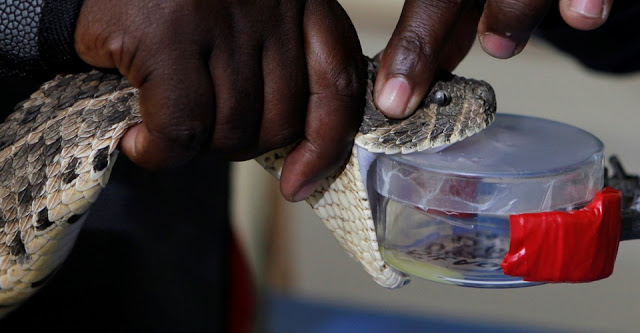LONDON: Scientists have created small organs in the laboratory which can be used to mass produce natural snake venom.
In the study published in the journal Cell, the researchers described how they created organoids of the venom glands of the Cape coral snake, which is endemic to parts of southern Africa.
If the method could be commercialised, it would be much more efficient than the way venom is currently produced — by raising snakes on farms and milking their glands, the researchers said.
“More than 100,000 people die from snake bites every year, mostly in developing countries. Yet the methods for manufacturing anti-venom haven’t changed since the 19th century,” said Hans Clevers from Utrecht University in the Netherlands.
“It’s clear there is a huge unmet medical need for new treatments,” Clevers said.
Every snake has dozens of different components in their venom. These are extremely potent molecules that are designed to stop prey from running away.
“They affect systems as varied as the brain, neuromuscular junctions, blood coagulation, and more. Many of them have potential bioprospecting applications for new drugs,” said Clevers.
His lab traditionally focuses on organoids made from human and mouse cells.
However, some of his students decided to study stem cells and develop organoids from reptiles.
“This is a field that does not exist, so they thought it was interesting to study the most iconic reptilian organ, the snake venom gland,” Clevers said.
“Once we grew the venom glands as organoids, we realised that they make a lot of venom,” he said.
The researchers started with the Cape coral snake because they knew a breeder who was able to supply some fertilised eggs.
The snakes were removed from the eggs before hatching, and small pieces of tissue were removed from various organs and placed into gels, along with growth factors.
In addition to the venom glands, the researchers also made organoids of the snake liver, pancreas, and gut.
“It would have been difficult to isolate stem cells from these snakes because we don’t know what they look like,” Clevers explained.
“But it turned out we didn’t need to. The cells soon began dividing and forming structures,” he said.
The venom gland organoids grew so fast that in just one week the researchers were able to break them apart and re-plate them, generating hundreds of plates within two months.
The scientists were able to identify at least four distinct types of cells within the venom gland organoids.
They confirmed that the venom peptides produced were biologically active and resembled the components of venom from live snakes. (AGENCIES)


